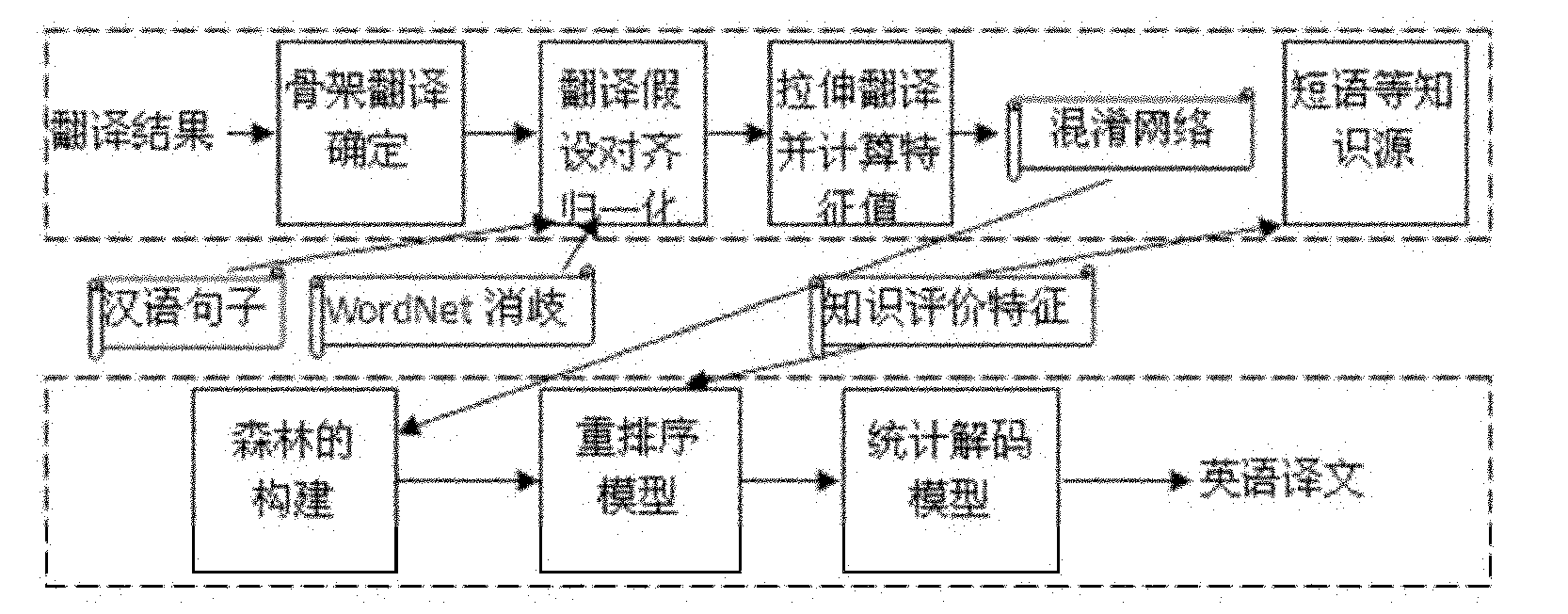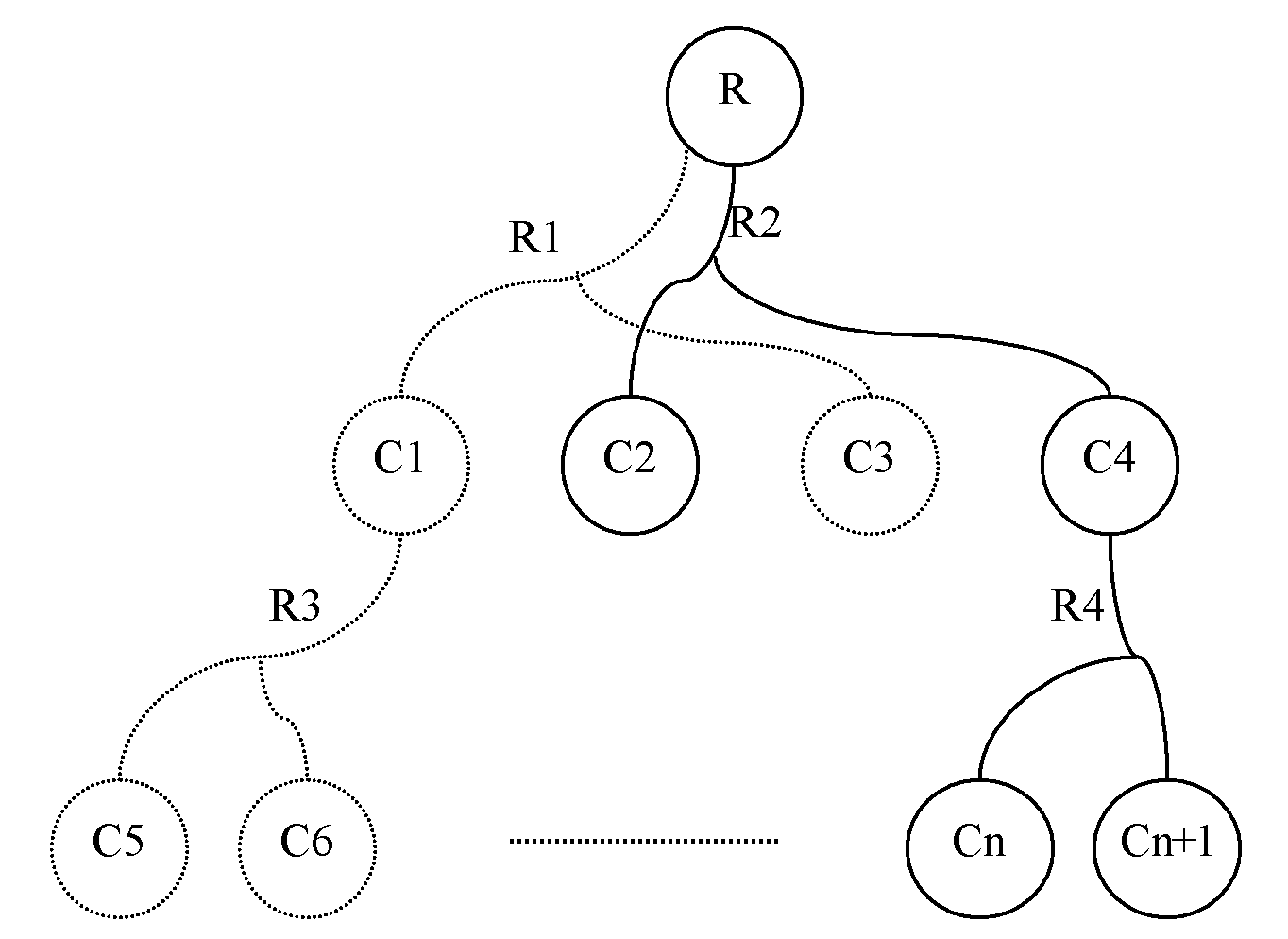Forest-based system combination method for counting machine translation
A technology of statistical machine translation and fusion methods, applied in the fields of instruments, calculations, special data processing applications, etc., can solve problems such as disordered word order, and achieve the effect of improving performance
- Summary
- Abstract
- Description
- Claims
- Application Information
AI Technical Summary
Problems solved by technology
Method used
Image
Examples
specific Embodiment approach 1
[0019] Specific implementation manner 1: The process of the forest-based system fusion method in statistical machine translation described in this implementation manner is:
[0020] 1. Construct a confusion network based on multiple machine translation results;
[0021] 2. Construct a forest based on the information in the constructed confusion network;
[0022] 3. Add the phrase and dependent syntax information to the forest in the form of feature values, reorder all the edges of each node in the forest, and obtain a new forest;
[0023] 4. Perform statistical decoding on the forest obtained in step 3 to obtain the final translation information.
[0024] The so-called forest-based decoding method is a decoding method used in the field of machine translation and syntactic analysis in the prior art, and the decoding method in the system fusion task is similar to the decoding method of machine translation / syntax analysis. To further improve the performance of the word-level system fusion...
specific Embodiment approach 2
[0025] Specific embodiment 2: This embodiment further defines step 1 in the forest-based system fusion method in statistical machine translation described in specific embodiment 1. In step 1, the process of constructing a confusion network is:
[0026] A1. The determination of the skeleton translation. According to the results of multiple machine translations, the skeleton translation is selected through the smallest Bayesian risk E b ,
[0027] E b = arg min E ′ A E X E A E TER ( E ′ , E ) - - - ( 1 )
[0028] In the formula, E′ represents any translation result, and E represents a collection of multiple machine translation results;
[0029] A2. The translation hypothesis is aligned and normalized. The alignment algorithm is used to establish the alignment between the skeleton translation and the hypothetical translation, and the two translation results are stretched by inserting "NULL" in the skeleton transla...
specific Embodiment approach 3
[0043] Specific embodiment three: This embodiment further defines step two in the forest-based system fusion method in statistical machine translation described in specific embodiment one. In this embodiment, the method of constructing the forest described in step two The process is: according to the confusion network, a bottom-up construction method is adopted to generate a forest through nodes and edges.
[0044] The specific process of generating the forest is: according to the leaf nodes, one or more intermediate nodes are generated from the bottom to the top using edges, until the root node is generated. All nodes and edges form the forest. When generating intermediate nodes and root nodes , Calculate the score of the language model and the score of the translation model of the corresponding node, and the sum of the two scores is used as the final score of the node. See figure 2 In the forest shown in the figure, the child nodes that generate the same translation result are...
PUM
 Login to View More
Login to View More Abstract
Description
Claims
Application Information
 Login to View More
Login to View More - R&D
- Intellectual Property
- Life Sciences
- Materials
- Tech Scout
- Unparalleled Data Quality
- Higher Quality Content
- 60% Fewer Hallucinations
Browse by: Latest US Patents, China's latest patents, Technical Efficacy Thesaurus, Application Domain, Technology Topic, Popular Technical Reports.
© 2025 PatSnap. All rights reserved.Legal|Privacy policy|Modern Slavery Act Transparency Statement|Sitemap|About US| Contact US: help@patsnap.com



